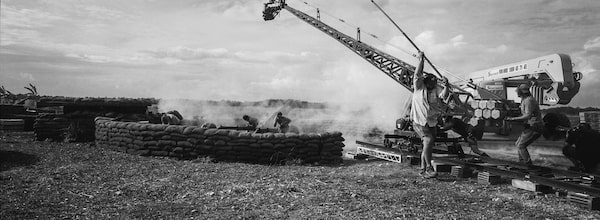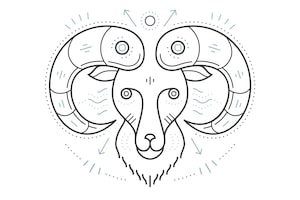
Director Kriv Stenders, left, and actor Travis Fimmel, centre, with camera crew on the set of Danger Close.Tim Page/The Globe and Mail
Danger Close is a new Australian-made movie about the Battle of Long Tan, a bloody skirmish in the Vietnam War where a small band of Aussies heroically held off a larger group of enemy soldiers.
As a photographer who covered the war, I was invited to go down to the movie set, an open piece of reclaimed swamp in Australia that’s now home to a Tiger Moth airplane club. For me it was like going back to ‘Nam – no, not to today’s Vietnam, but the ’Nam of yesteryear – with all its fears, fancies and follies. It was both fearsome and awesome, technicolour surreal.
I missed the actual Battle of Long Tan in 1966. I was on R&R in Singapore, recovering from wounds received from a friendly-fire incident on a U.S. Coast Guard cutter. But the invitation gave me a second chance to visit the battlefield, or at least the cinematic reproduction of it. The opportunity to be on set and take photos came about through the man directing, Kriv Stenders, a dead ringer for my old boss at GIZ German Aid in Cambodia.
I did my homework and watched Stenders’s movie Red Dog three nights before heading to the set in Pimpama. Loved it. Upon arrival, I got an open-arm greeting by one and all, from the commanding officer to the folks serving out the tasty tucker in an old hangar. I decided that, to do this opportunity justice, I had to shoot it on the 1965 Leica M2 that I had used in Vietnam and shoot it in black and white.

Actors load a Huey with ammo boxes on set. The helicopter’s signature sound as it idles sends photographer Tim Page back to a time when he last rode in one.Tim Page/The Globe and Mail

Lasarus Ratuere, one of the “alarmingly young” actors playing ground troops in the film, as Corporal Buddy Lea.Tim Page/The Globe and Mail

While some of the camera equipment on set was familiar, Page remarks on the use of drones this time, which happen to cost the same as a Huey in 1966.Tim Page/The Globe and Mail
The cast of actors that made up the ground troops were alarmingly young – and then I remembered that we were all young back then. Vikings star Travis Fimmel plays Lieutenant Colonel Harry Smith and Luke Bracey is Sergeant Bob Buick, while Daniel Webber portrays Private Paul Large and Richard Roxburgh is Brigadier David Jackson.
Recent army veterans from both the Iraq and Afghanistan conflicts filled out the ranks of extras, and they passed on advice to the cast to make them act like a true Digger in the field. And then there were the uniforms and the weapon craft. With their attention to detail, they served as tripwires to flashbacks and all their attendant emotions.
There was a bustle to this high-tech set; it felt like the intent of war, unsaid discipline, the military blending into civilian life. It was hard to discern who was army, who was crew.
And then the drone men, fresh from a David Attenborough series, swooping over armoured personnel carriers and artillery and shooting right down their barrels. One of these supertoys, set to replace helicopter camera work, cost the same as a Huey B model in 1966 – $250,000 or $300,000, depending on the extras.
This was a set with a passion to make it good, to tell the story of a heroic action by a band of Australian and New Zealand Army Corps brothers who, against all odds, came out on top.

Page: “It was a jolt to reload film in the field again as rain, both real and effect, showered in the long, unforgiving, tufty grass.”Tim Page/The Globe and Mail
The passion to tell the story originated with Martin Walsh 14 years ago and, with his co-producers John and Michael Schwarz, they got the movie over the line. Aug. 8 is its scheduled release date on the big screen, which is the place to immerse yourself in this story.
The sound of a Huey has a signature like no other, and to stand in front of one as it idled spun me back to my last ride on one after a 105-millimetre mine blew up three metres away from me and left me literally DOA, for at least a time. It was a heavy flashback.
Later, I froze over the poncho-wrapped mannequin bodies of 18 cinematically dead soldiers, lined up for their last ride – all that waste and your own fragility exposed raw and naked. Yeah, you reiterate, “it’s only a movie.” But it still trips the mind back to those days when anything could and did come down on you like you could never imagine.
The set had a historical look. It was a jolt to reload film in the field again as rain, both real and effect, showered in the long, unforgiving, tufty grass. The reality is that war is fought by the young, ordered by the old and that the young are sacrificed for gains of which they are never fully aware.
War is hard to grasp when you are in the middle of it and it takes the rest of a lifetime to understand. You surfed an incredibly pumped adrenalin high and hoped you were not hit. You tried to dispel the worst thinking, only a cold one and a grateful smoko and for it all to go away. War is beyond strange, yet it attracts us like “junkie moths to a flame,” as war correspondent Mike Herr wrote in Dispatches.
The weird thing about shooting stills on a war movie is that you can rerun the whole thing, even the death bits. The reality of war is, of course, far more brutal; there is no moment to stop action and reshoot. You have to get the frame in the first shot, look up while others hunker down and pray that you won’t cop it. All control of your situation is lost in war, fates decided by split seconds or millimetres.
Maybe it can only be retold in a movie, in all its surrealism, in frozen vignettes of pain and ecstasy, in moments that are almost beauteous. This is the case with Danger Close. It will look the part.
Photojournalist Tim Page was 20 when he first arrived to cover the Vietnam War in 1965. Now he reflects on what he experienced during his years covering the conflict, and the toll it took on him.
The Globe and Mail
Editor’s note: An earlier version of this article included an incorrect spelling for actor Lasarus Ratuere.



